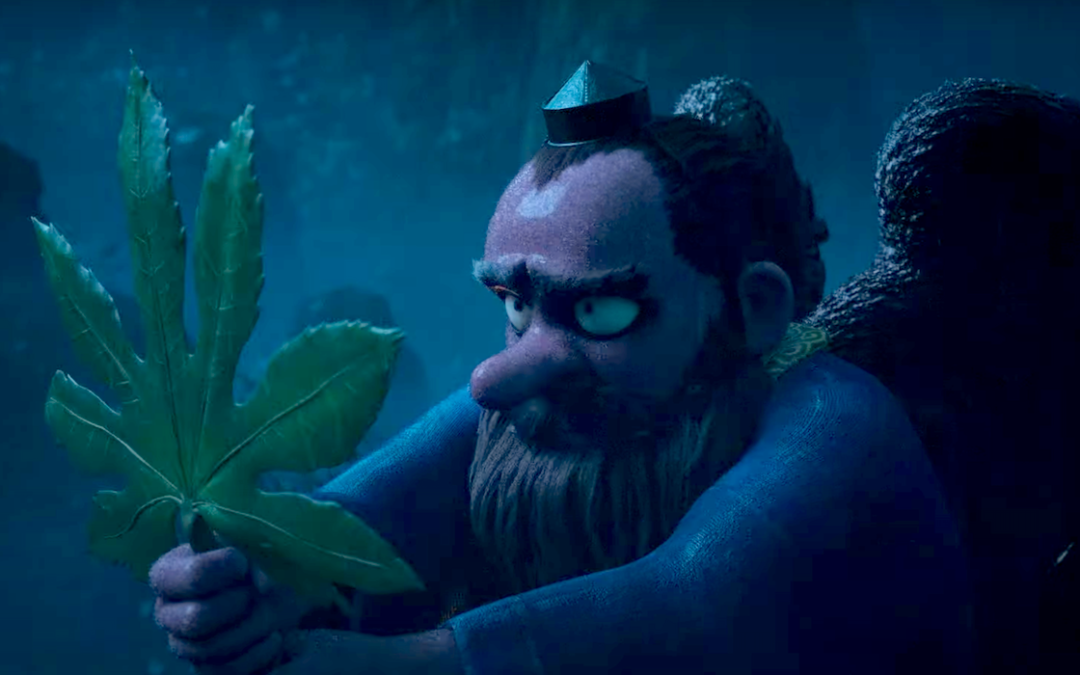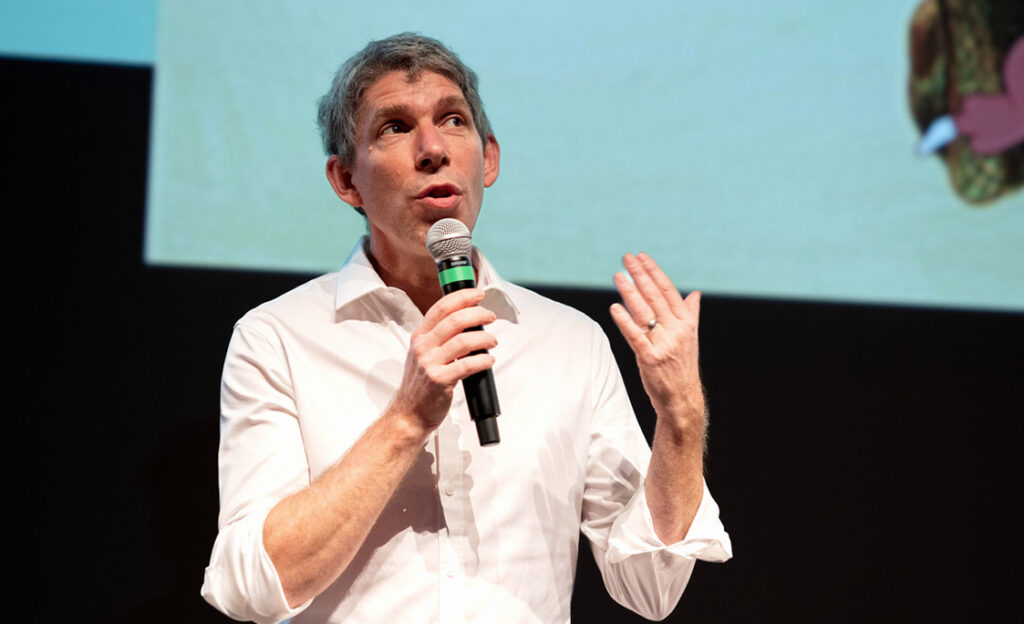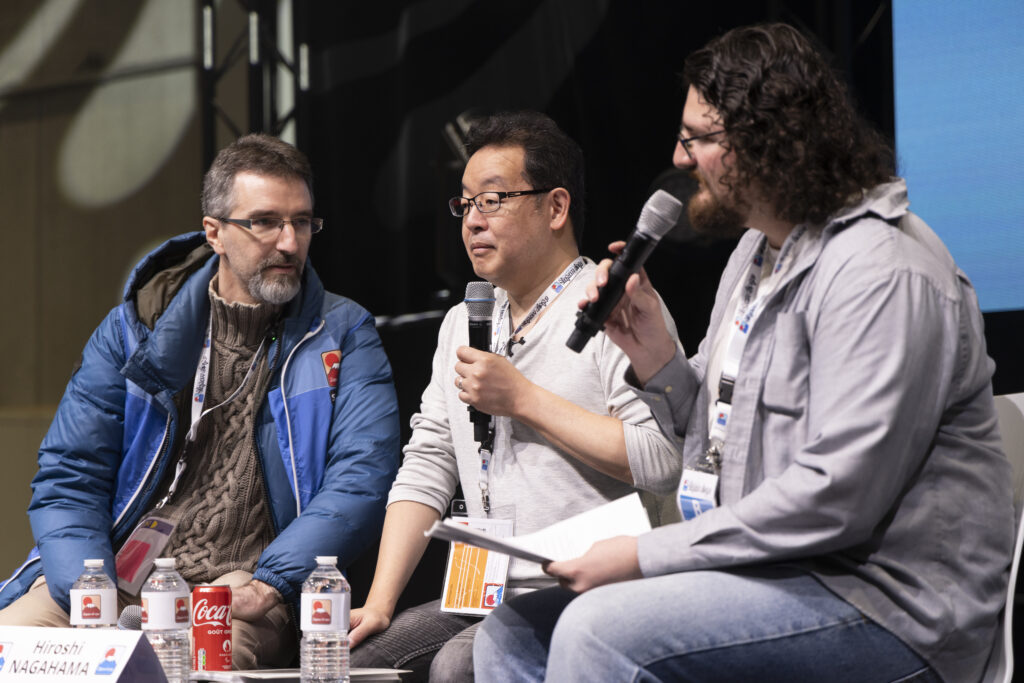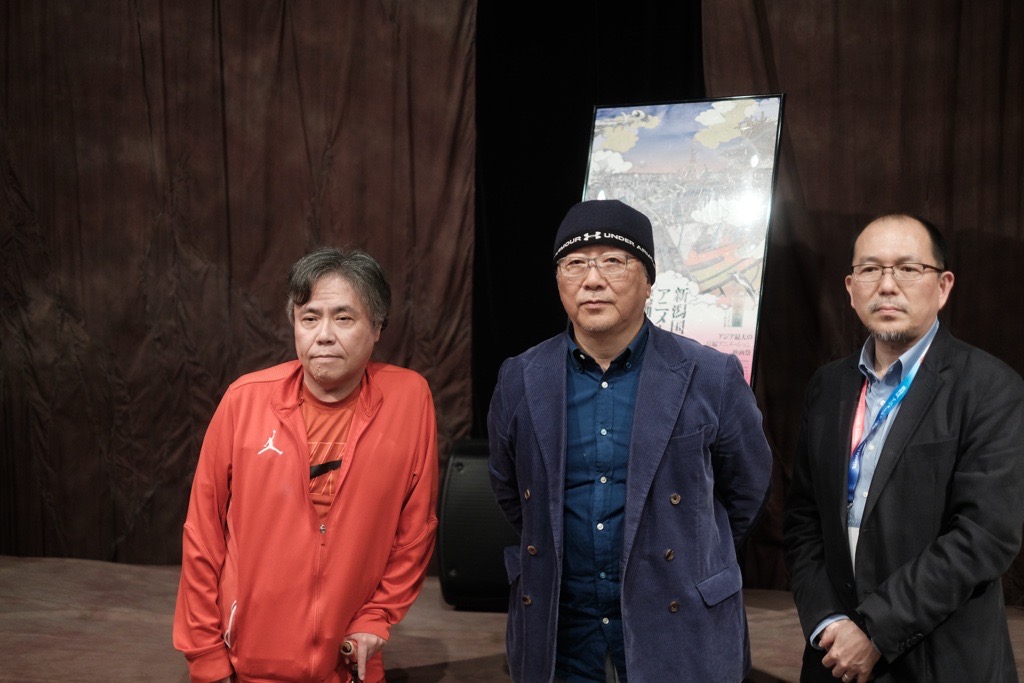On June 17th, 2022, American animation studio Tonko House held a Work-in-Progress panel dedicated to their subsequent work, the Netflix series Oni: Thunder God’s Tale. While it is on its own particularly promising, it is of particular interest for anime fans thanks to the presence among the staff of one of Japanese animation’s leading scriptwriters: Mari Okada.
Like our content? Feel free to support us on Ko-Fi!
Before delving into Okada’s involvement, it is necessary to discuss Tonko House and Oni on their own. In 2014, two ex-Pixar employees, Robert Kondo and Daisuke “Dice” Tsutsumi created Tonko when they submitted their short film The Dam Keeper to the Annecy Festival (it also obtained an Academy Award nomination). Tsutsumi and Kondo went back over this history at the beginning of the panel, even showing some early photos of their studio in Berkeley, California – an empty building with an unfinished floor and bare, white walls.
Since then, Tonko House has grown and evolved, recruiting many employees but also creating a second studio in Japan, where they at first organized exhibitions about their ongoing and future work. Indeed, the studio’s two creators are Japanese-American, and they wanted to benefit from their origins to realize what may seem a very ambitious goal: bridge the divide between American and Japanese animation. Oni is also a direct result of these reflections.
Indeed, Tsutsumi and Kondo went over the very origins of the project: in 2017, for an exhibition in Japan, Tsutsumi realized a painting of the show’s two main characters, Onari and her father. During the production of The Dam Keeper‘s feature version, Tsutsumi felt like he didn’t fit into Hollywood’s system. He was also frustrated by the whitewashing controversy surrounding the live-action Ghost in the Shell movie. He, therefore, wanted to create what would feel like an “authentic” representation of Japanese culture and folklore, made by people familiar with it for non-Japanese audiences: this would be Oni, whose characters are all taken from Japanese mythology and folklore. Through discussions with Kondo, the project started taking shape and soon attracted the attention of potential distributors. It seems that Netflix was the one who was the most receptive to Tonko’s project and their search for diversity.
It is at this point that Mari Okada entered the picture. She said she came to know Tonko House during Tonko House’s 2017 exhibition in Tokyo, where a friend brought her. There, she saw Tsutsumi’s painting for what would become Oni and, as she told it, she immediately thought: “I don’t know what this is, but I want to work on it! I have to!” This was just before Tsutsumi himself became aware of Okada’s work while watching Dragon Pilot (Hisone to Masotan), which aired one year later, and wanted to work with her; they met through mutual contacts, and, progressively, Okada was brought on the project. This was anything but easy, as Okada was busy with her anime work. Still, most importantly, many people inside and outside of Tonko House feared that having a Japanese writer on an English-language work would only complicate the production. But Tsutsumi insisted, and the script became a collective work between Okada, Tsutsumi, and Oni‘s editor.
After discussing Oni‘s origins and themes – identity, inclusion, and the feeling of being an outsider – producer Sara Sampson proceeded to retrace the production in detail. The show should be divided into 4 “chapters,” amounting to a total of 150 minutes of footage; from the first stages of pre-production to completion, the entire production took two years. According to Sampson, the most difficult challenges were the budget and the format – indeed, most of Tonko’s core staff is used to features or shorts rather than series. But it seems that the schedule was also particularly rough: as Sampson said, in big CG studios, teams are generally expected to turn out 4 seconds of footage a week; on Oni, they had to do 4 seconds a day.
Initially, Oni should have been stop-motion, which Tsutsumi described as his “favorite medium.” In order to make that a reality, Tonko associated itself with the leading Japanese stop-motion studio, Studio Dwarf, which produced a pilot film for them as a proof of concept. However, Oni‘s story quickly grew and became too complex for a stop-motion work, so Kondo and Tsutsumi decided to move to CG. However, they did it originally: their CG would try to replicate the look and feel of stop-motion as much as possible. During the panel, a lot of footage was shown, and the results were incredible: objects and textures look like they come from real models. A program using procedural IA was created whose goal was to replicate the moss found in the forests of Yakushima, where the team went location hunting. The animation has a frame rate of only 12 frames per second rather than the usual 24 and is just irregular and expressive enough. The trick not only helps give this stop-motion feel but was also a very neat trick to hit deadlines. While 2D animation and anime were never explicitly brought up, it’s clear that Oni‘s philosophy of strong posing and slow framerates, and more generally the “less is more” motto, were inspired by Japanese works.
Oni was not entirely produced within Tonko; they got help from other animation studios around the world, such as Tokyo-based CG studio MEGALIS VFX and freelance artists from many countries such as France. As the production was international and was also done during the pandemic, it almost entirely happened remotely.
According to Tsutsumi, Tonko wanted to break the client-contractor relationship between themselves and other studios, yet another way to try and bridge the gap between the US and the world’s animation industries.
Oni: Thunder God’s Tale is bound to look and feel very different for an audience used to 2D anime productions; however, it is of interest beyond the involvement of one of anime’s most notorious artists. As mentioned, the footage we saw was breathtaking, and the team’s enthusiasm was communicative; the show’s ability to replicate stop-motion animation while overcoming the technique’s limits is simply impressive.
Like our content? Feel free to support us on Ko-Fi!
You might also be interested in
Benoît Chieux, a career in French animation [Carrefour du Cinéma d’Animation 2023]
Aside from the world-famous Annecy Festival, many smaller animation-related events take place in France over the years. One of the most interesting ones is the Carrefour du Cinéma d’Animation (Crossroads of Animation Film), held in Paris in late November. In 2023,...
Directing Mushishi and other spiraling stories – Hiroshi Nagahama and Uki Satake [Panels at Japan Expo Orléans 2023]
Last October, director Hiroshi Nagahama (Mushishi, The Reflection) and voice actress Uki Satake (QT in Space Dandy) were invited to Japan Expo Orléans, an event of a much smaller scale than the main event they organized in Paris. I was offered to host two of his...
Akira stories – Katsuhiro Otomo and Hiroyuki Kitakubo talk at Niigata International Animation Film Festival 2023
Among the many events taking place during the first Niigata International Animation Film Festival was a Katsuhiro Otomo retrospective, held to celebrate the 45th anniversary of Akira and to accompany the release of Otomo’s Complete Works. All of Otomo’s animated...





Recent Comments